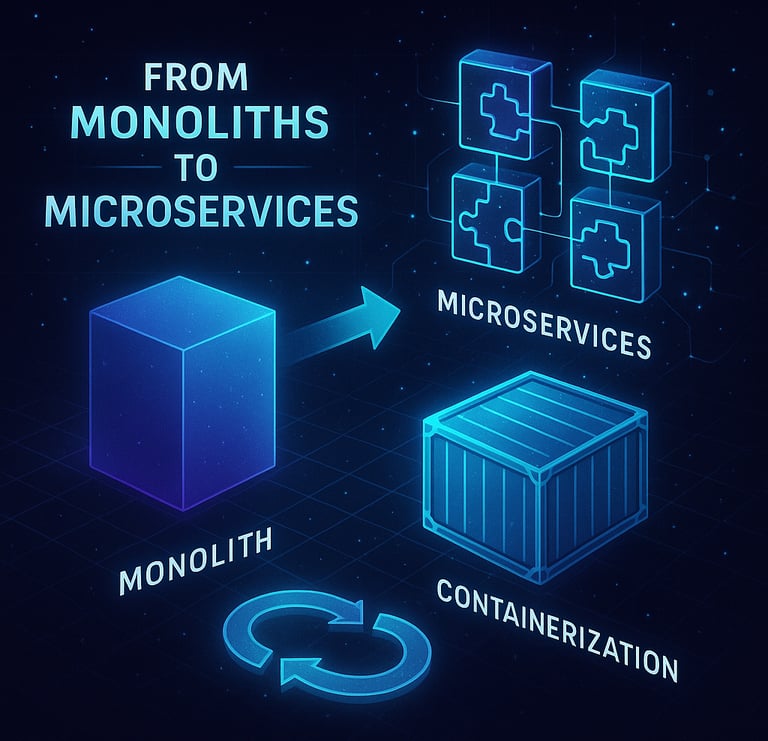From Monoliths to Microservices 🧩
Mr. Hunain Panjwani
10/3/20252 min read


Historically, most applications were built as monoliths—a single, unified block of code where all the components were tightly coupled. A change to one part of the application required the entire system to be re-built, tested, and deployed, which was slow and risky.
In contrast, a cloud-native architecture uses microservices. An application is broken down into small, independent, and self-contained services, each with a specific business function (e.g., a "payment processing" service or a "user authentication" service). These services communicate with each other through well-defined APIs.
Agility & Speed: Teams can develop, update, and deploy each microservice independently. This allows for rapid iteration and a faster time-to-market.
Resilience: If one microservice fails, the rest of the application can continue to function. This "fault isolation" prevents a single bug from taking down the entire system.
Scalability: You can scale individual microservices based on demand. For example, during a holiday sale, you might scale up the "checkout" microservice without needing to allocate more resources to the entire application, which is more cost-effective.
The Power of Containerization 📦
Microservices are brought to life through containerization, which is a technology that packages an application and all its dependencies (libraries, frameworks, and configuration files) into a single, lightweight, and portable unit called a container. Unlike a virtual machine, a container shares the host operating system's kernel, making it much more efficient.
Portability: A containerized application will run identically across any environment, whether it's a developer's laptop, a public cloud, or a private data center. This "write once, run anywhere" philosophy eliminates the common problem of "it works on my machine."
Consistency: Containers ensure that the development, testing, and production environments are identical, reducing bugs and simplifying the DevOps workflow.
Efficiency: Because they are lightweight and fast to start, containers are highly resource-efficient, allowing businesses to run more applications on the same infrastructure.
DevOps: The Cultural Shift 🔄
The shift to a cloud-native architecture requires a cultural and operational change. DevOps is the practice that unites development and operations teams, creating a culture of continuous collaboration and automation.
Continuous Integration/Continuous Delivery (CI/CD): DevOps teams use automated pipelines to build, test, and deploy code changes frequently and reliably. This automation is made possible by the modular nature of microservices and the consistency provided by containers.
Enhanced Agility: The synergy between DevOps, microservices, and containers allows teams to respond to market changes and customer feedback with unprecedented speed, solidifying their digital transformation.
